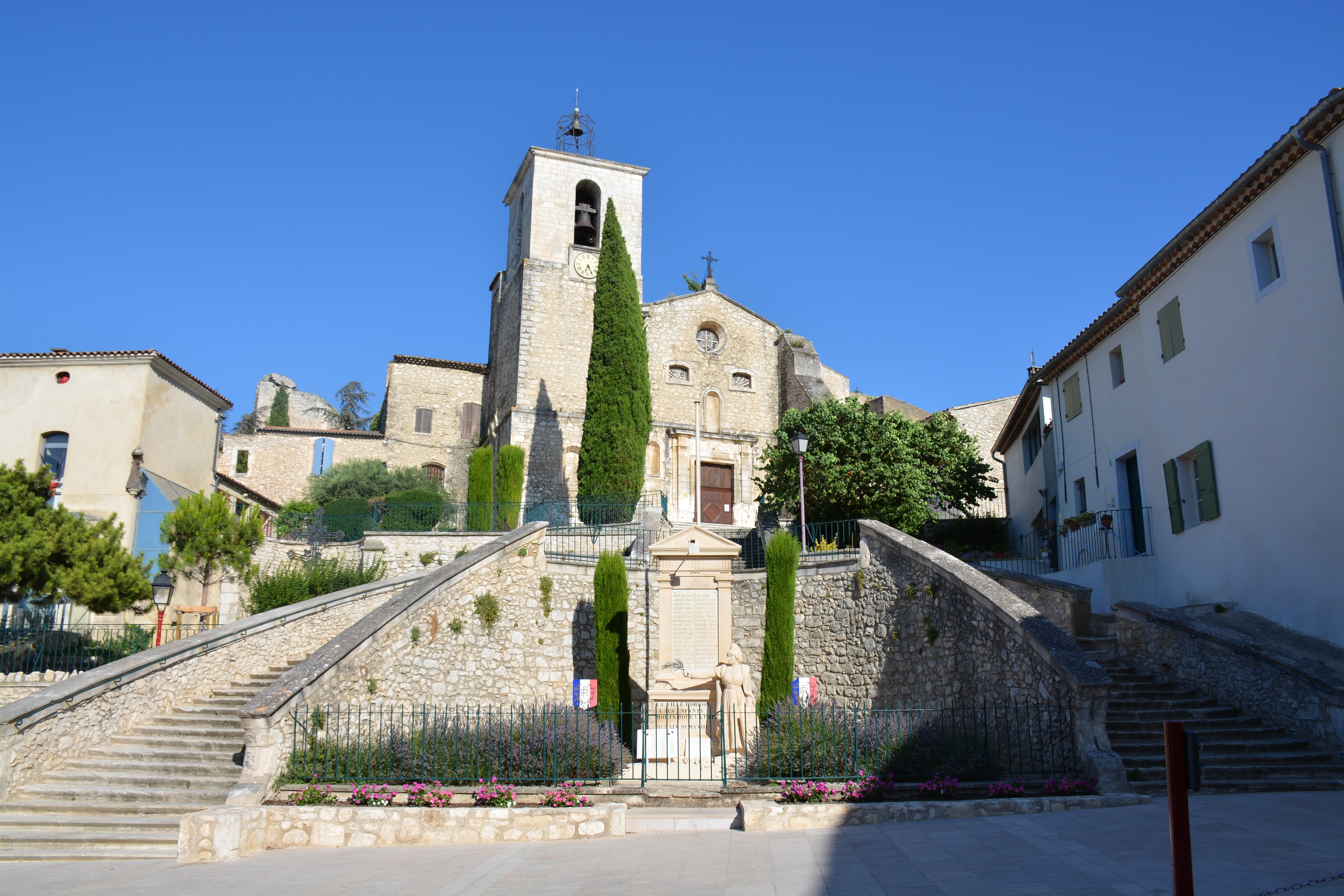
Copyrights © Orgon
France > Provence-Alpes-Côte d'Azur > Bouches-du-Rhône > 13660 > Orgon > Place de la Liberté
This church dates back to 1325. The bell tower was built in 1660, the year King Louis XIV visited Orgon. Sober yet elegant, in Provencal Gothic style, it comprises a five-sided apse and a single nave of bare stone, higher than the apse.
The Assomption Church dates back to 1325. The forecourt of the parish church is accessed via the 19th century monumental horseshoe staircase. On the forecourt near the Town Hall, at the bottom of the church, a decorated cast iron cross sits on top of a stone altar where the priest of the commune would officiate under certain circumstances. This cross replaced an old wooden cross which supported a very large Christ. The first church was within the village of La Savoie, at the foot of the château ruins. The current church, which ritually faces east to west, dates back to 1325. The bell tower was built in 1660, the year in which King Louis XIV passed through Orgon. It still chimes with eight bells; one large bronze bell baptised in 1754 and called Anne-Marie and seven made of cast steel and introduced in 1862. This Provençal Gothic-style church is sombre yet elegant. It has a five-sided apse and a single, bare stone nave, higher than the apse; the construction as a whole has a ribbed vaulted roof. The chancel dates from the 14th century and is the oldest part of the Church. Surprisingly, it is at an oblique angle in relation to the church's central axis; this is intended to evoke the tilting of Christ's head on the cross. Only three churches in France have this feature. The main altar is made of marble and was put in position in 1825. In the 18th century it was covered in woodwork and adorned with five Classical paintings, which were listed as historic monuments on 12 July 1971. A superb tryptich, 'The Virgin With Child between Saint Peter and Saint Paul', is a masterpiece of 16th century Provençal painting. The first Marian chapel is dedicated to the Virgin Mary. The miraculous statue of Notre-Dame de Beauregard was placed on the 1837 marble altar. A Renaissance-style clerestory and four windows illuminate the vaults, whose origins are revealed by a stone engraved with '1611'. Finally, there is a walnut confessional dating back to the 18th century. The second chapel, Saint Anne, has an octagonal Renaissance-style clerestory and two stained glass windows surrounding the stone altar, which is surmounted by a pink marble portico from 1804. The statue of Saint Anne stands in a stone niche. The Chapel of Sacré Coeur houses the baptismal fonts, the former stoup of Beauregard Convent supported by an ancient column discovered on Beauregard hill. A statute of Saint Teresa and another of Saint Anthony of Padua adorn this part of the church. To the left of the chancel is the Chapel of the Pentecost, formerly the Chapel of Saint Teresa of the Infant Jesus. Convicts passing through Orgon who wanted to go to Mass were attached to two solid iron rings, which are still visible today. A niche contains the statue of Saint Louis of Gonzaga. The door leads to the organ, which was inaugurated by Cannon Bonnard on 15 August 1873. A statue of Joan of Arc stands on a column in Saint Joseph Chapel. The last chapel, that of the Souls of Purgatory, is the smallest. This sanctuary is also a large necropolis. Five chapels contain the burial places of a number of Orgon families and of priests and monks who administered the parish. The parish church is open all year round during Mass: Saturdays from 6 p.m. to 7 p.m. in summer and from 6 p.m. to 7 p.m. in winter and on Sundays from 10.30 a.m. to 11.30 a.m.

Copyrights © Orgon
A proximité:
Datatourism data updated on: 2024-05-24 14:41:43.234